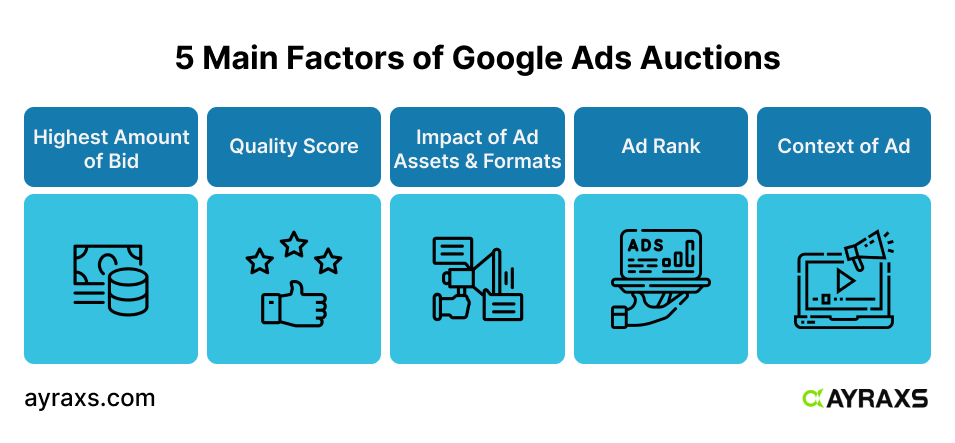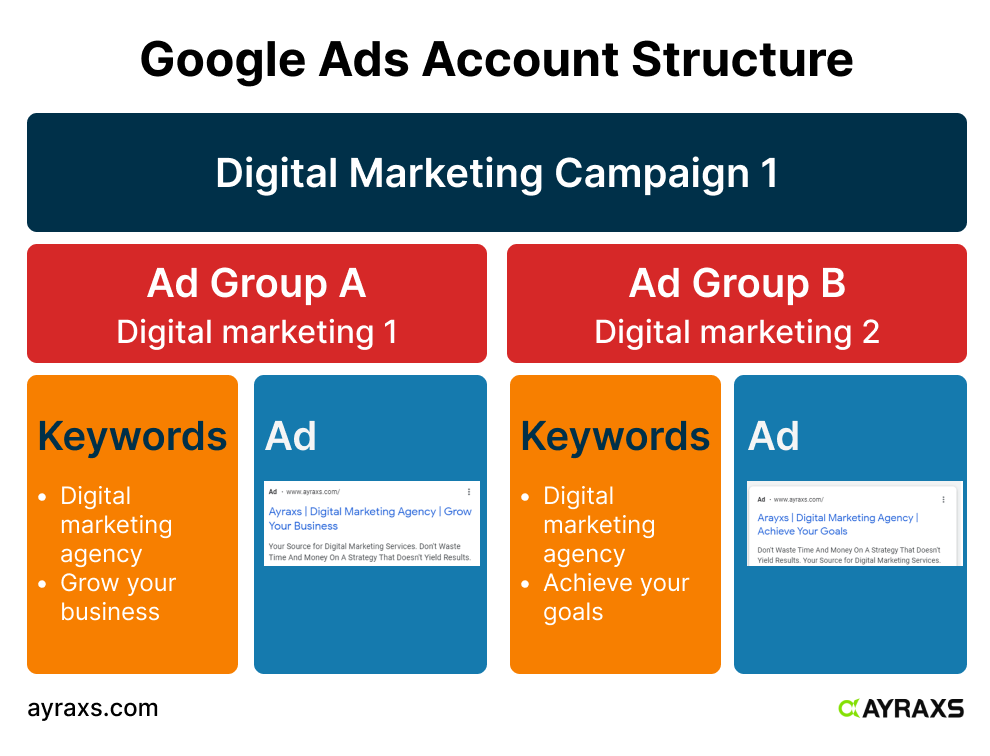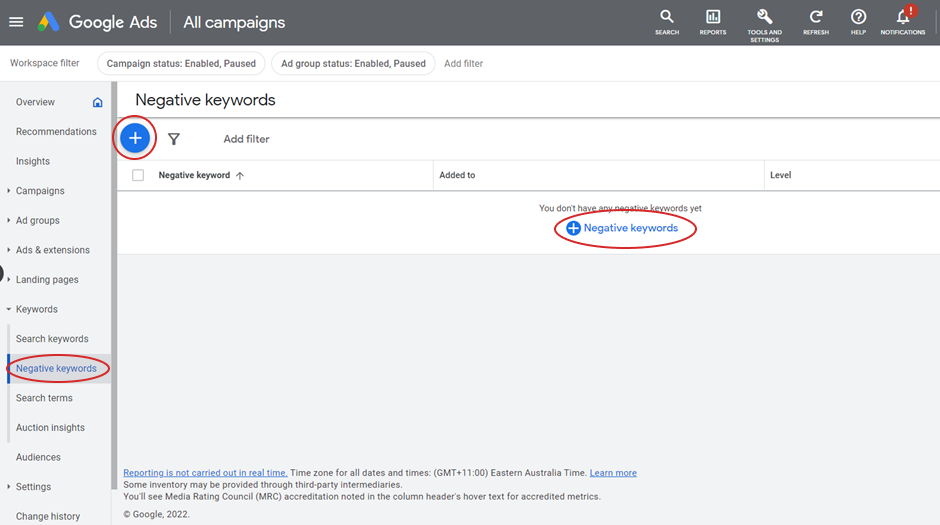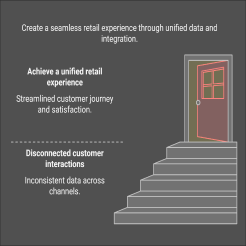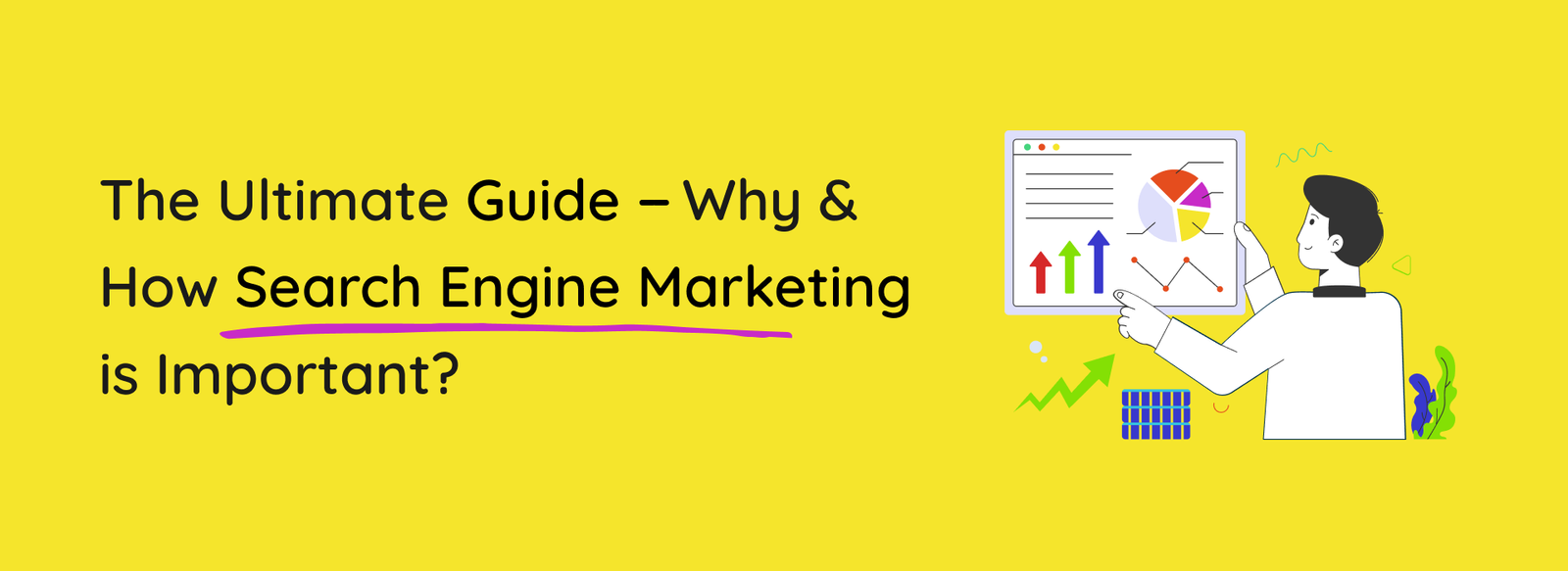
Search Engine Marketing
SEM means using an effective search engine marketing strategy to secure a top rank on SERPs. The goal of search engine marketing (SEM) is to enhance a Website’s online visibility on search engine results pages (SERPs).
The top results you see in SERPs are normally searched or paid ads. The other results that appear after search ads are organic results. Let’s explore how search engine marketing is important for brand awareness.
Here’s the screenshot attached how you’ll see the results:
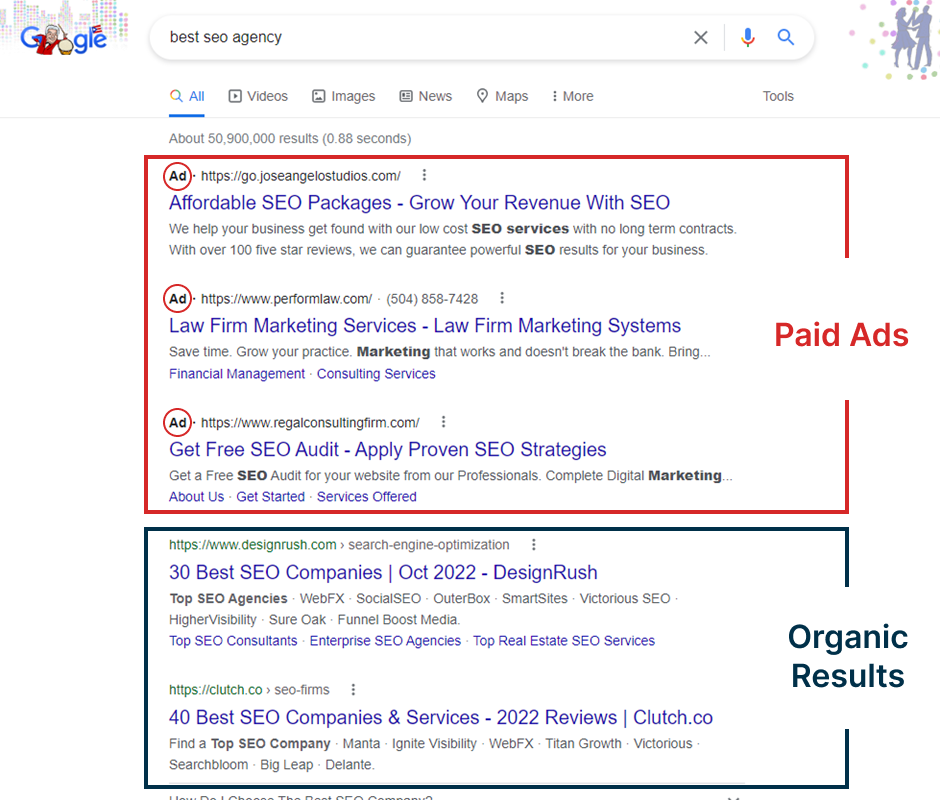
Have a look at the points that we are going to cover in this article:
- The functionality of search engine marketing
- The functionality of ad auctions
- The best practices for SEM
Go ahead and start reading on!
SEM vs SEO
Search Engine Marketing (SEM) is a digital marketing strategy used to boost the visibility of a site in search results. Both paid and organic endeavors are included in it.
SEM is also known as pay-per-click marketing (PPC), and it does not just cover paid marketing but a lot more. In this business model, the marketers pay every time a user clicks on the ad.
On the other hand, Search Engine Optimization (SEO) refers to organic results, just like free traffic as a result of offering content that is useful, relevant, and well-ranked on Google.
You may have long-term traffic to your website with Ayraxs top-notch SEO services, and search engine ads can enhance your website’s visibility and get the attention of the people looking to purchase your product.
The Functionality Of Search Engine Marketing
With search engine marketing, you can reach more new customers, which helps in driving revenue. Your site appears above the organic results in the (SERP) search engine result pages.
Example:
Search for the “crazy domain” and you’ll see the ranking first organically. But you are also carrying out the google ad spot at the top.
You might wonder why they are paying to rank on a specific keyword when they are already ranking organically because there is no need to bid on the keyword when you are organically appearing on the search results.
The main reason is to take up more visibility in SERP. As we know, organic rankings fluctuate, but with PPC, you can still appear at the top of the SERP.
If the users are ready to buy your product, you can hook them from the top of the SERP. In the other case, the users will go with the most visible and accessible option, which might be your competitor’s ad. So, if you want your site to appear at the top of the SERP, you must win an ad auction.
The Functionality Of Ad Auctions
Different advertisers bid on the keywords to secure the paid ad spots at the top of the SERP. The winner of the auction is the one who gets the top spot.
Now it’s time to know how bids work in Google Ads.
There is a need to consider two main things for ad auction.
- The keyword you want to bid on
- How much amount are you willing to pay for each Click?
You must identify the right price to bid on the keywords that highly depend on the industry you are trying to promote. Such as, the CPC for less competitive niches like garden and home is lower than the niches like legal and insurance.
Your ads will be included in the ad auction after determining from Google that the keywords you are bidding on appear in the user’s search queries.
Moreover, the ads will show up to users with enough commercial intent. Such as, if you are selling a product or service, the ad will show up to the users who are ready to purchase it.
On the other hand, informational searches are only visible to organic results, for example, “What is SEO?”
Even if your ad is a perfect match for the keyword, several other factors can still determine whether or not it will win the auction.
How Does Google Decide Which Ad Will Win?
There are five main factors that Google considers during an ad auction as per the Google Ads guidelines.
- The Highest Amount Of Bid: The higher the amount of the bid you will be able to pay for each click on your ad, the greater the chances of winning an ad auction. Setting an amount of bid means informing Google that you are willing to pay a set amount against a click on your ad.
- Quality Score: This is the formula that Google Ads utilizes to assess the appropriateness of your ad or its value to the user. Your ad should be relevant and useful for the user. The ad’s performance can be improved with the Google Ads Account to make your quality score better.
- Impact of Ad Assets & Formats: The extra details you presented in your advertisement include phone numbers, links to specific pages, etc. This additional information should have a greater impact on Google’s Ads assessment.
- Ad Rank: Your ad’s quality, the amount of bid you will pay, and the landing page are known as ad rank. If you want your ad to be shown in the top position, then your ads must meet the minimum quality level Google requirements.
- Context Of Ad: The context of the ad is to be considered by Google while evaluating ad rank. The information in the ad context includes the location of the user, search time, device name, and others.
You have complete control over Google’s automated bidding strategies, referred to as the maximum bid. The same is true for ad extensions that could affect the effectiveness of your ad.
To win the auction, you must get the highest quality score assigned by Google between 1 – 10.
The quality score is considered the gatekeeper of PPC advertisements. It ensures that the ads appearing to users are helpful and relevant to them.
Your ads mustn’t match the irrelevant or generic queries. Otherwise, it will affect the cost of your paid searches enormously. On the other hand, the return on investment (ROI) will decrease, and you will not get the desired outcomes.
SEM Best Practices & Valuable Tips
You must create an effective ad campaign to build an appropriate campaign.
- Find the right keywords
- A compelling ad copy
- Analysis of competitors’ ads
How to get started is as follows:
Google Ads Account Setup & Campaign Structure
You must follow these simple steps to set up your Google ads account.
Structure your campaign with an effective strategy and get the most out of the budget that you are spending on your paid search. Let’s have a look at the four parts that you must know:
- Campaign: A collection of ad groups with a shared budget, target market, and other parameters.
- Ad Groups: Collections of relevant keywords that you use
- Keywords: Terms you are going to use for bidding
- Ad: It is the copy that you want to show your users when your ad appears to them.
Create ad groups to focus on keyword clusters that appeal to your target market. Otherwise, bidding on irrelevant and useless keywords will be wasted much of your money. You should create a well-structured Google Ads Account that will look like the specimen attached below:
Read on if you don’t know how to choose the right keywords!
Find The Right & Relevant Keywords
This is the first step for a successful SEM campaign. You should find the right and relevant keywords.
The first step to creating a successful Search Engine Marketing campaign is to choose the right keywords. So you can target the right audience at the right time.
When your links appear to the right audience, there are more chances to get more clicks and higher sales.
Several factors depend on finding the right keywords for your campaign, including volume, cost per click (CPC), search intent, and competition.
There are various keyword planner tools to use while you are going to start paid keyword research.
You can use the “Keyword Magic Tool” if you need to start keyword research for your paid campaign.
Search a keyword relevant to your business, and you will see the results. Start scrolling to brainstorm ad groups.
There are filters available in the tool to add negative keywords so that they will be excluded.
Here are the main things to consider when picking the right keywords to target:
Commercial & Transactional Keywords To Target
Google’s algorithm considers search intent before presenting the most relevant results that can be the perfect match.
There are four main categories of search intent:
- Navigational (searching for some specific product/service)
- Informational (want to learn a topic)
- Commercial (when you want to investigate any product, service, or brand)
- Transactional (want to make a purchase)
Here are some examples of the keywords you can use to search:
With the examples above, you can realize that the users searching with the commercial and transactional keywords are more focused on purchasing a product.
So, you should focus on those keywords that are more likely to purchase at the end of the search. Various tools show the search intent of each keyword.
Check Out The Keyword Volume & Competition
Before choosing the right keywords, you must look for the keyword volume and competition among the keywords if you want your brand to appear against competitive keywords and entice qualified leads. Then, you can combine highly competitive and less competitive keywords as a balancing act.
The search volumes vary as per the industry, so there is no perfect search volume. Do proper research to identify the keyword’s value.
Look for the competitive density if you have found the right keyword volume. On a scale of 0.00 to 1.00, the most competitive density considered is 1.00. You can see this in the screenshot attached below:
After choosing the right keywords that are good volumed and competitive, you must consider cost per click. To which extent can you bid to win the auction?
Analyze The Cost Per Click
The ad with the most significant bid and the best quality score wins the ad placement in a Google Ads auction. Therefore, the keywords in high demand are the most expensive.
You can analyze the cost-per-click rates of keywords by using the keyword magic tool or directly from the Google Ads keyword planner. Check the “CPC” column after you’ve found your keyword in the keyword tool.
If you are planning to bid on a highly competitive keyword, you must bid the highest. Otherwise, your competitors’ ads will be picked up.
Insert Negative Keywords
If you don’t want to show your keywords on the irrelevant result pages, add the negative keywords to the ad campaign or ad group. For example, you don’t want to show up your ads in the results that include “free.” So, add the word “free” in negative keywords.
Below is an example of adding negative keywords:
Write A Compelling Ad Copy
Let’s start on the last step of developing a great search engine marketing campaign (SEM): creating your ad copy. You can continue the process now that you have all the necessary components. Each sponsored advertisement includes a headline, a display URL, a description, and ad extensions. Avail Ayraxs copywriting services to create compelling ad copies for your site.
Now let us talk about what makes a good Search Ad and Landing Page.
Headline Optimization
Your ad’s headline will attract the most attention; therefore, it should clearly and precisely describe your company’s offers. Each ad has room for three headlines, up to 30 characters.
The following are the qualities of a compelling headline:
- The wording should be straightforward and uncomplicated.
- Do not force the use of keywords.
- Respond to the goals of the end-user
- Make an emotional or humorous pitch if it suits your brand’s voice
Here are some catchy headings that might be appropriate for a shoe company:
- Cheap Sneakers for Sale
- Shop for the Best Shoes for You
- Visit Our Sneaker Shop
Select a URL to Display
The URL that is shown on your advertisement is called its display URL. Yet, the URL of the landing page can include more precise information.
Such as, your shortened display URL is sneakers.com, and if a user chooses to interact with the advertisement by clicking on it, the landing page URL, also known as the finalized URL, includes
additional information, such as sneakers.com/running-shoes.
If a user enters a query into your search bar, the derived URL should direct them to the most relevant page within your Website. This display URL is meant to be a curiosity.
Selecting a good display URL involves the following steps:
- Assist visitors in figuring out what to expect from a particular page
- Brand names and products are prominently displayed
- Do not make things complicated
Make Captivating Titles & Descriptions
Create a clickable headline and an enticing two-line description.
These include your services or products, the benefits of visiting your Website, or anything important to your target audience.
You’re allowed up to 90 characters for each line of description.
The following is a list of suggestions for the effective composition of advertisement descriptions:
- Put keywords where users see them and where you know your business is so that they know your ad is relevant to them.
- Don’t let people lose interest by rambling on and on; keep your messages quick.
- Always include a call to action (such as “buy now,” “put your order,” “plan now,” etc.) to increase clicks.
The following is a list of several specimens of descriptions that you use for our illusory sneaker Website:
- Take advantage of our Semi-Annual Sale to enjoy a discount on some of our most demanding items.
- A collection of over one hundred styles to pick from, free shipping, and cashback on every purchase.
- You can customize the shade and texture of your kicks by selecting our Custom Sneakers from our product catalog.
Embedding Ad Extensions
Ad extensions allow you to provide more information about a product or service, leading to a higher click-through rate.
The following are some examples of ad extensions: call buttons, information about a place, connections to certain portions of your website, extra content, and more.
When there are ad extensions available, an advertisement will generally perform better. However, since their appearance is dependent on many different variables, they do not always make an appearance:
- Position in the Advertising Hierarchy: When an ad rank threshold is a reason. If your ad extensions aren’t appearing, raise your price or improve the quality of your ad, or both.
- Where to Put Your Ad: Because there is a limit to the number of advertisements on the search engine results page, the ads with the highest rankings are shown first. The number of extension views for advertisements farther down the page is often smaller.
- Extra Add-Ons that You Have Activated: Google will determine the optimal mix of supported ad extensions and formats before you ever start an auction. Google claims that “you will not be able to achieve a combination of extensions that delivers greater predicted click-through rate than the anticipated C.T.R. of a higher ad placement.”
Check out Google’s comprehensive list for additional information on different ad extensions.
Create a Corresponding Landing Page
When people click on your ad, they’ll go to your landing page. Typically, the URL of this page will be the same as your final URL.
To comply with Google’s policies, your ad’s display URL and landing page domain must be the same.
Consider that the Quality Score of a keyword is determined by several criteria, one of which is the quality of the online interaction on the landing page.
A landing page’s success depends on many factors, including those listed below:
- Information to good use
- A simple framework for exploration
- The page’s link count
What do users anticipate seeing when they click on your ad and take you to your landing page?
Keep an eye on your campaign’s organization, ad grouping, and ad language to ensure you’re not wasting money there. Finally, keep trying new things until you find what gives you the highest return on investment. Avail Ayraxs premium web design & development services to comply all these factors for high ad score. We hope that you have got an idea how search engine marketing is important and how it can make a difference in terms of ROI & lead generation.
Analyze Competitors’ Ads
Studying your competitors’ commercials and methods before launching your own is wise. You analyze their successes to learn from their models. Visit a market research platform such as Semrush’s Advertising research.
Explore the Ad copies data.
The list of ads from your competitors is shown in full.
Type in a product’s name into the search field, or use the more granular filters to look for anything specific in a product’s description or URL.
Confused about who you’re up against in the market?
Add your domain to the tool and check out the competitor’s section:
You see a competitive positioning map of your paid traffic competitors here:
The tools we discussed in this article are listed below:
- Google Ads Account
- Google Keyword planner
- Semrush
- Semrush Keyword Magic Tool
- Semrush Advertising Research



